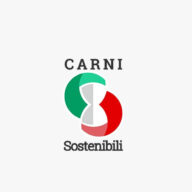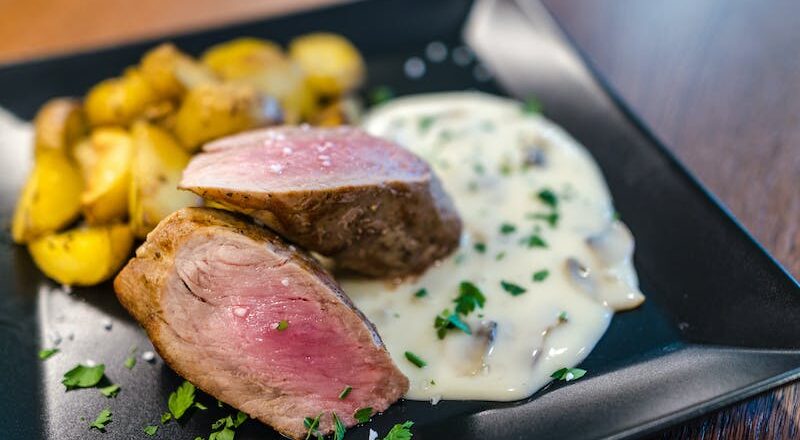
Red meat is essential for healing
“Food is your medicine”. It is a phrase full of truth, and those who work in hospitals and deal with the recovery of patients every day know this very well.
According to Arrigo Cicero, President of the Italian Nutraceutical Society, red meat is essential for treating some clinical conditions. The expert, who spoke at the conference “Red meat: economy, health and society. A reflection“, organised by the National Academy of Agriculture, reminds us that there are, in fact, some types of subjects that could benefit from eating red meat to maintain and recover their state of health.
In his presentation entitled “The Sensible and Rational Consumption of Red Meat, Clinical Indications”, Cicero illustrates studies on four situations that are constantly encountered in hospitals. These are anaemia or iron deficiency; sarcopenia, or the pathological loss of muscle mass; wound healing; and cognitive decline in older people.
“Four very important problems in a society like ours, where Italy is the country with the longest life expectancy in Europe and one of the longest in the world,” Cicero says: “Moreover, in our clinics, there is a special rule. The meals we serve in the hospital, apart from the taste, should all be balanced to provide the protein intake, including animal protein, to meet the body’s metabolic and health needs. However, at mealtimes, the protein content of meat is the one most rejected by patients. So, what should theoretically be the ideal meal becomes the less ideal meal for the patients, who should find healing in what they eat. It’s as if they’re missing one or two therapy tablets”.
#Proteins and #iron: with #PlantBased products, #phytates and #tannins tend to precipitate iron, inhibiting its absorption at the intestinal level. Click To Tweet
Red meat is the best source of heme iron, which is used for synthesising haemoglobin and modulating the immune response to facilitate the recovery and reconstruction of tissues. “Unfortunately, even if we regularly consume iron as part of a healthy diet, several concomitant situations prevent its absorption,” the expert explains: “We have a global hunger for proteins and iron. If we consume many products of plant origin, as recommended by the guidelines, phytates and tannins tend to precipitate iron and prevent its absorption in the intestine. The same applies to coffee, tea, or antacids, the world’s best-selling medicines.
Vegans and athletes with increased metabolic needs also suffer from iron deficiency. The only way to solve the problem is to increase your iron intake. In the spinach-versus-hamburger debate, remember that heme iron’s bioavailability from meat is eight times higher than from vegetables. We hear that we can solve the problem by sprinkling citrus juice, such as lemon, on spinach, but the same advantage is amplified with beef, which contains much more iron and is eight times more bioavailable. So, if I have to play my card, I play it smartly”.
Concerning sarcopenia, the pathological loss of muscle mass, it is a macroscopic problem because the body composition of older adults is changing, especially in rural areas, where they are losing the component of strength of mass, which was much more visible 10 to 20 years ago. According to the President of the Italian Nutraceutical Society, this is due to the change in dietary habits in recent decades, for which we are now beginning to pay. This condition affects survival, which is dramatically reduced. The hospital stay is four times longer in the highly sarcopenic patient. Still, the real problem is an association with a whole series of pathologies that increase the cardio-metabolic risk due to the accumulation of lipids, with important repercussions in the medium to long term from a risk perspective in general.
Lean #RedMeat brings benefits to #MuscleMass, it is a contradiction to demonize adequate consumption of #AnimalProteins. Click To Tweet
“Epidemiological studies tell us that there is an anti-sarcopenic dietary pattern, that is a complete dietary model that includes an adequate amount of animal protein,” Cicero stresses: “Lean red meat is beneficial for muscle mass, and the evidence is strong and consistent in both observational and interventional studies. Once the patient is sarcopenic, it is very difficult to recover, so we need to take a preventive approach, especially in terms of educating the population. This doesn’t mean forcibly converting the ethical vegan or the vegetarian who doesn’t like meat, but neither does it mean demonising the adequate consumption of animal proteins, which are essential for maintaining muscle mass“.
Even wound healing is not trivial and is strongly linked to amino acid intake. According to the expert, this condition justifies the attempt to reactivate adequate meat consumption in subjects suffering from skin and subcutaneous lesions, especially the so-called “difficult wounds” that refuse to heal spontaneously despite the best care. “The nutritional component can have a fundamental impact, not only on prevention, which would be the best thing, but above all on the possibility of healing these wounds,” Cicero explains: “What helps us heal materially and what can be interesting from the point of view of dietary management? Anything that provides high-quality proteins, zinc and iron, in other words, the nutritional properties of red meat, which is rarely consumed by this type of patient, creates a dangerous, little-noticed vicious circle”.
Finally, the President of the Italian Nutraceutical Society cites intervention studies, not theoretical but practical, in which older people with cognitive decline, who do not consume an adequate amount of meat and are nutritionally deficient, were offered a multi-component intervention consisting of physical activity, social interaction and some additional consumption of lean red meat. After about six months of treatment, there were many small significant changes, as the ability to remember and learn improved in a macroscopic way, which is not insignificant given that these are elderly people with cognitive deficits, with a completely neutral effect on inflammatory parameters.
#Health: in specific clinical conditions, #meat should not be removed from the menu. Everything must be calibrated on #quantity and #quality. Click To Tweet
“This leads us to think about the value of red meat as a nutraceutical for specific diseases, which would be difficult to manage even from an economic point of view,” Arrigo Cicero concludes: “I cannot force you to eat meat, but if there are specific clinic conditions, it must not be removed. Everything has to be balanced in quantity and quality because if you want to compensate by taking pills or supplements, good quality nutraceuticals, pharmaceutically processed to make them bioavailable, it costs a lot. Meat also costs money, but I have to eat something, so if I invest in better quality food rather than supplements, I have a great advantage regarding an adequate and balanced diet”.





